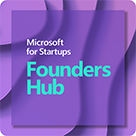Meagan Kinmonth Bowman brings the same level of energy to our interview as she does to the STOPWATCH™ business. It is no surprise that she was selected this year by the Northwest Arkansas Tech Summit as their Innovator of the Year. As founder and CEO of STOPWATCH™, Meagan and her team of world-class engineers deliver a unified solution based on basic game theory principles covering everything from inventory management to real-time pricing, modality and assortment optimization, and online media signals. The STOPWATCH™ platform was architected from inception (over six years ago) to send and receive information to the world’s top brands and manufacturers across over 101 online and offline retail selling outlets. In short, Kinmonth Bowman and her team built the Voltron of modern-day business analytics suites. I sat with Meagan this week and started with the simplest question: Why did you start your own company?
“Throughout my career, I’ve always been a super-charged high performer but when I was about 26, I realized that if I continued on a leadership trajectory at a traditional company, I would probably get to where I wanted to be, but the path would be very linear and fairly prescribed. I sat down with my husband, and I said, you know, I’m just not wired for predictability.
I would rather fail miserably or win big, than end up somewhere in the middle. I had always been my boss’s favorite yet most difficult employee. It was time to do my own thing.”
I’ve met many founders who had this clarity about their career. Having that self-knowledge and the courage to back it up are essential motivating factors to starting a company and making your vision a reality. I wondered how Meagan went from that fateful decision that she was going to found a company to deciding what kind of company she wanted to create.
“Like many other founders, I think I’ve written 60 business plans. Early on, one of the best conversations I had was with Lori Coulter who is the co-founder and CEO of a killer DTC omen’s adventure fashion group, Summersalt. It was 15 years ago, and I turned up with a business plan looking for a mentor to start my journey. Instead, Lori offered me a job so I could learn from her about running a business before setting out on my own. It wasn’t what I came to hear, but it made me realize for the first time that I couldn’t just chase stuff.
Even when I had a little money to get started, it became about understanding the mechanics of a startup and setting up the right risk parameters. You have to know where to place bets and that 90% of what you do isn’t going to work. You need time and money and margin to allow for these things.
Later on, I was sitting in an advanced graduate business school class at Washington University in St. Louis when one of my favorite professors asked the class, “Who here would like to earn $100,000?” Everyone raised their hand. He then went on to explain if we were willing to scrape up all the roadkill within five miles of the university campus in every direction within five minutes of the incident, we could earn $100,000. He said our chancellor hates roadkill and was looking for a single point of failure roadkill clean-up attendant. Everyone lowered their hands, except me. That’s what I learned from Lori… Whatever. It. Takes.
Sure, I started with 60 business plans, but I whittled them down to one very focused idea with a high opportunity for success: CPG or Consumer Packaged Goods. Everybody buys things from chips to trash bags to toothpaste and it doesn’t matter if you’re a multi-millionaire or a single mom on food stamps, most people in America are forced to interact with some aspect of the CPG ecosystem. From a business model perspective, that’s a really good place to be.”
I love Meagan’s clear-sighted ruthlessness. Once she knew she wanted to run her own business, she kept going until she found the vertical she felt offered the greatest chance of success and poured her considerable energies into making it work.
I asked Meagan how she felt about those early days and what changes she would make for the next generation of entrepreneurs, knowing what she knows now.
“I would like more people to get the opportunity to join in.
There are a lot of amazing people that aren’t able to pursue entrepreneurial endeavors for many reasons. If I could wave a magic wand, I would make sure that anybody who really has that crazy in them get access to the resources they need to give entrepreneurship a go.
Back in the beginning, when we were just four engineers in my spare bedroom, no one was fighting for us to work in their stack. One of the reasons we love Microsoft is because of the open-source opportunities. Microsoft had a huge part to play in building our confidence and helping us feel like we were part of a trusted technology group early on. That was really cool.”
Meagan really hit on something here that is dear to all our hearts at Microsoft for Startups: the democratization of access to resources, people and funding. This continues to sit at the heart of everything Microsoft for Startups is working for and informs the work we are doing with the Microsoft for Startups Founders Hub.
When I founded my startup in Italy, I knew I was outside the mainstream in terms of raising funding and securing customers. I wanted to know how Meagan ended up in Arkansas with her company STOPWATCH.
“It’s a long story and it goes back to when I was working at Hallmark, and they put me on the Amazon account. At that time no one was buying greetings cards online and I felt like that guy in Office Space stuck in the basement with his stapler.
I was talking to George Wescott who was an innovative and talented broker for Amazon at the time and eventually I just asked if I could sit with him and learn everything there was to know about Amazon. The Amazon mechanics were so different to anything from the bricks and mortar world. Amazon worked from a stock positioning model, and I showed my team that if we knew the Amazon algorithms better than anyone, we could capitalize as first-movers within this new consumer connection platform. As a result, I moved my desk to the warehouse and began tinkering with our ERP and EDI connections in order to radically improve our shipping mechanics. Our team of Hallmark warehouse workers optimized pieces of the fulfillment process no one was thinking about at the time.
I figured if we could make this work within the Hallmark machine, the same principles could be introduced across a variety of CPG companies that would eventually catch the Amazon craze. That’s when I moved to Bentonville, Arkansas. Firstly, it’s cheaper to live here than in Seattle! But also, there are 1200 supplier offices here. We picked up and moved to Arkansas in 2014 and started building this multi-platform optimization system that allowed a company as sophisticated as say, Procter & Gamble to be as effective via machine learning across all online platforms combined vs. just Amazon. We essentially replicated that same level of Amazon effectiveness across Walmart, Target, Kroger, CVS, Walgreens, Dollar General, and many others.”
In Meagan’s telling it all seems like a logical path where each step is dictated by the one before, but I think she’s underselling the vision she had of how CPG companies would need to be working with retailers, e-tailers and everything in between.
Having vision is just the first part. Committing to that vision by moving your family across the country is a whole other level. I asked her what those early days felt like when she was still new in Bentonville.
“I would go to suppliers working with Walmart and the people I was interacting with weren’t the slightest bit worried about what Amazon was doing back in Seattle. Then I would ask them about Walmart’s e-commerce strategy and get equally blank looks. I felt like Chicken Little trying to convince a whole supplier culture that the sky was about to fall.
It took years for people to come round and during that time I worked with and learned from a lot of really gracious people. From Bill Waitsman, James Farmer and Ross Cully at The Harvest Group to Patrick Miller of Flywheel Digital to other early visionaries within the space.
Bill Waitsman helped me understand how brands work with a broker to sell to Walmart. My team of engineers tested the algorithmic optimization patterns we had been working on across hundreds of supplier partners. We had to make sure we weren’t dealing with false positives because every category and every brand had unique nuances to consider and act upon.”
Hearing Meagan’s experiences with the biggest brands in consumer retail and the effort required to get them to start paying attention to the online shopping experience is astonishing. Microsoft Cloud for Retail launched in public preview at the start of this year bringing together data sources across the retail value chain and connecting experiences across the end-to-end shopper journey. Microsoft is helping retailers know their customers, empower their employees, and build resilient supply chains. STOPWATCH™ is at the forefront of accelerating innovation within this space.
I never get tired of hearing founder origin stories and, of all the CEOs I have spoken with, Meagan was one of the most generous in shouting out all the people that had helped on her journey. This combination of being absolutely driven while remaining grateful is as impressive as it is inspiring.











